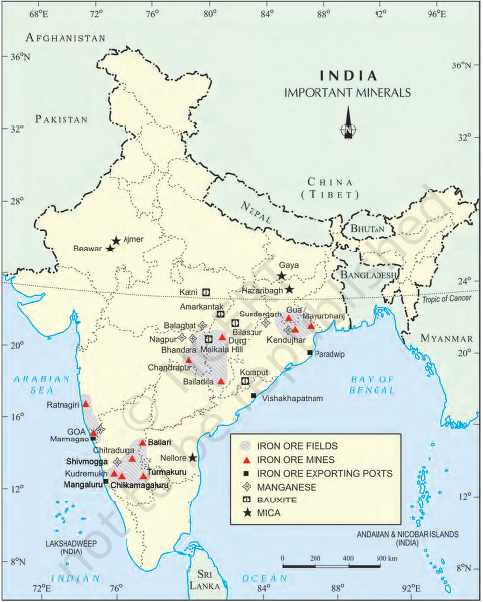-
25 Jan 2025
GS Paper 1
Geography
Day 48: Examine the impact of uneven distribution of mineral resources on regional development in India. How can this disparity be addressed? (250 Words)
Approach
- In Introduction, highlight the significance of mineral resources in India.
- Examine the economic, social, and environmental impacts of uneven distribution, and suggest measures to address the disparities.
- Conclude with emphasis on the importance of balanced and sustainable development.
Introduction
Mineral resources play a vital role in India's economic growth, contributing significantly to industries, employment, and exports. However, their uneven geographical distribution, concentrated mainly in states like Jharkhand, Odisha, and Chhattisgarh, creates regional imbalances in development. Addressing this disparity is critical for ensuring inclusive and sustainable growth.
Body
Impact of Uneven Distribution of Mineral Resources:
- Economic Concentration: States rich in minerals attract significant industrial investments, leading to high GDP contributions.
- Example: Odisha (coal, iron ore) and Jharkhand (mica, copper) are key contributors to India's mining GDP.
- Mineral-deficient states, such as Kerala and Punjab, face limited industrial growth, increasing their dependence on agriculture and services.
- Regional Disparities in Employment: Mineral-rich regions create direct and indirect employment opportunities in mining and related sectors.
- In contrast, mineral-poor regions lack such opportunities, resulting in uneven employment patterns and migration to mineral-rich areas.
- Environmental Degradation in Resource-Rich States: Intense mining activities lead to deforestation, loss of biodiversity, and water pollution.
- Example: Coal mining in Jharkhand has caused widespread environmental damage, affecting agriculture and water resources.
- Social Challenges: Mining areas, often inhabited by tribal populations, face displacement, loss of livelihoods, and inadequate rehabilitation.
- The benefits of mining rarely reach local communities, leading to socio-economic inequalities and unrest.
- Example: Naxal-affected areas in Chhattisgarh and Jharkhand highlight governance and developmental gaps.
- Inefficient Resource Utilization: Lack of infrastructure and advanced technologies in mineral-rich regions reduces mining efficiency and sustainability.
- Example: India has vast reserves of bauxite and iron ore but struggles with beneficiation and value addition.
Measures to Address the Disparity:
- Equitable Revenue Sharing: Implement transparent District Mineral Foundations (DMF) to ensure mining revenues benefit local communities.
- Example: DMFs have supported health, education, and infrastructure projects in Chhattisgarh and Odisha.
- Regional Development Initiatives: Promote industrial clusters in resource-deficient states to diversify their economies.
- Develop sectors like renewable energy, tourism, and agro-processing in these regions.
- Technological Advancement and Infrastructure: Invest in modern mining technologies and logistics to optimize mineral extraction and reduce environmental damage.
- Example: Use of satellite-based monitoring for sustainable mining practices.
- Skill Development and Employment Generation: Establish skill training centers in mining and resource-deficient regions to enhance workforce employability.
- Encourage labor-intensive industries in underdeveloped states to create jobs.
- Environmental Regulations and Rehabilitation: Strengthen regulations for environmentally sustainable mining and enforce strict penalties for violations.
- Ensure timely rehabilitation and resettlement of displaced communities with robust welfare programs.
- Decentralized Resource Governance: Empower local governance bodies to manage resources effectively and ensure community participation in decision-making.
Conclusion
Addressing the challenges of uneven resource distribution requires a balanced approach that promotes equitable development, environmental sustainability, and social welfare. By leveraging regional strengths and implementing inclusive policies, India can achieve holistic and sustainable growth, reducing disparities and fostering national progress.





